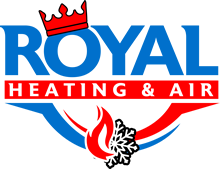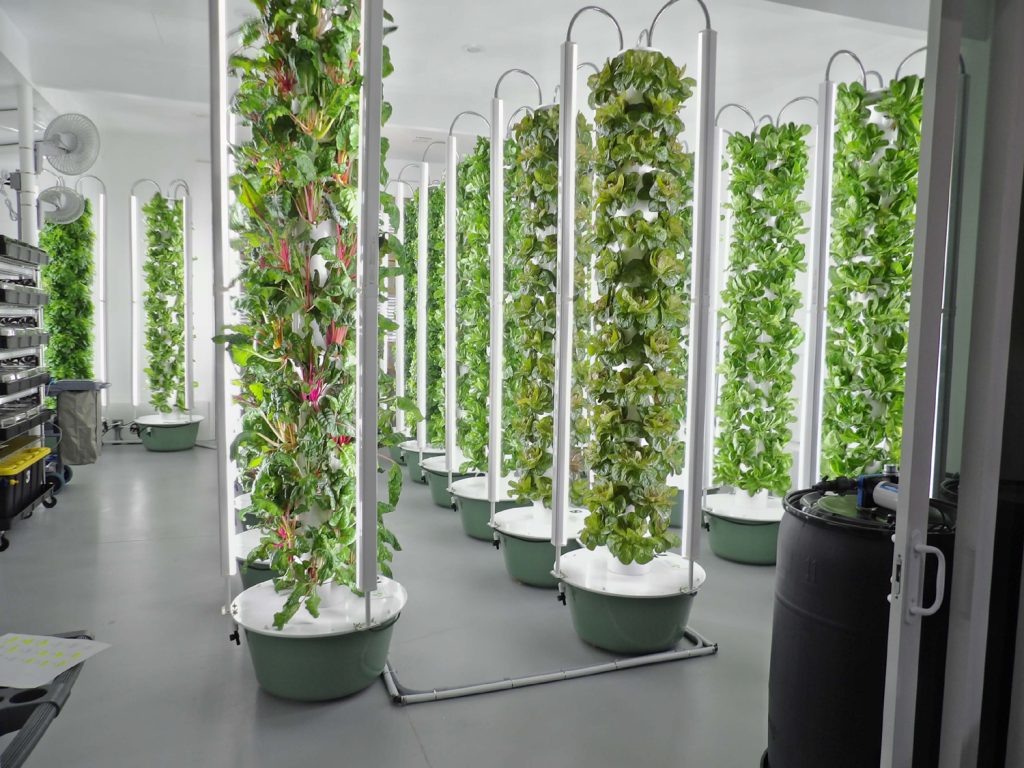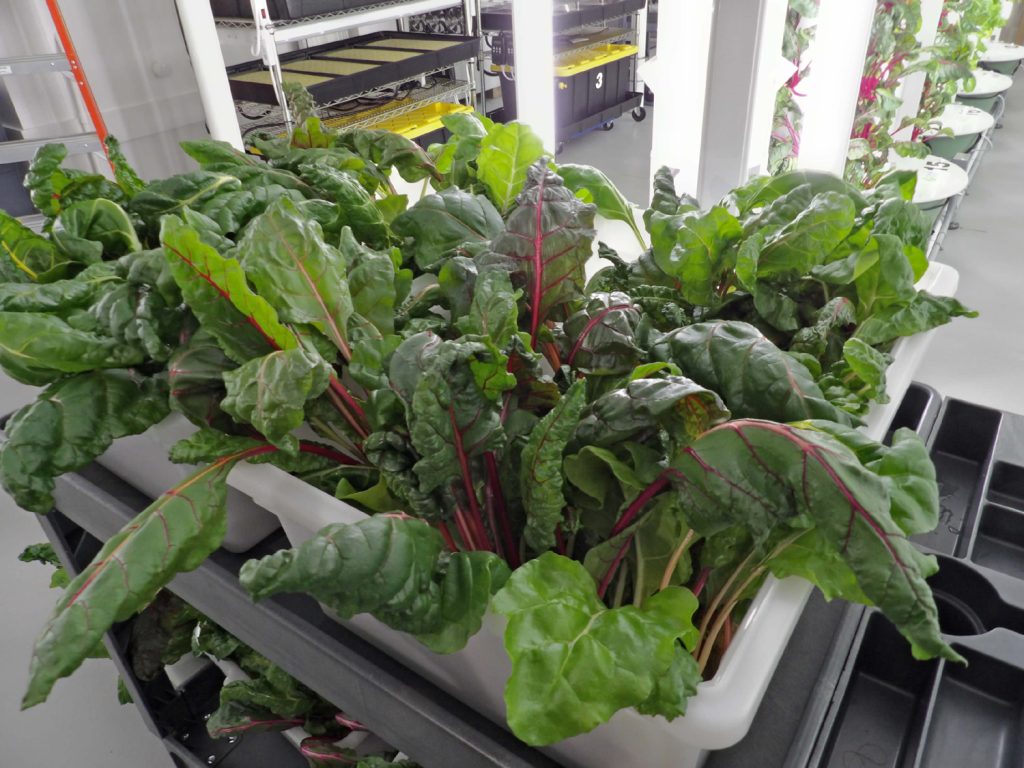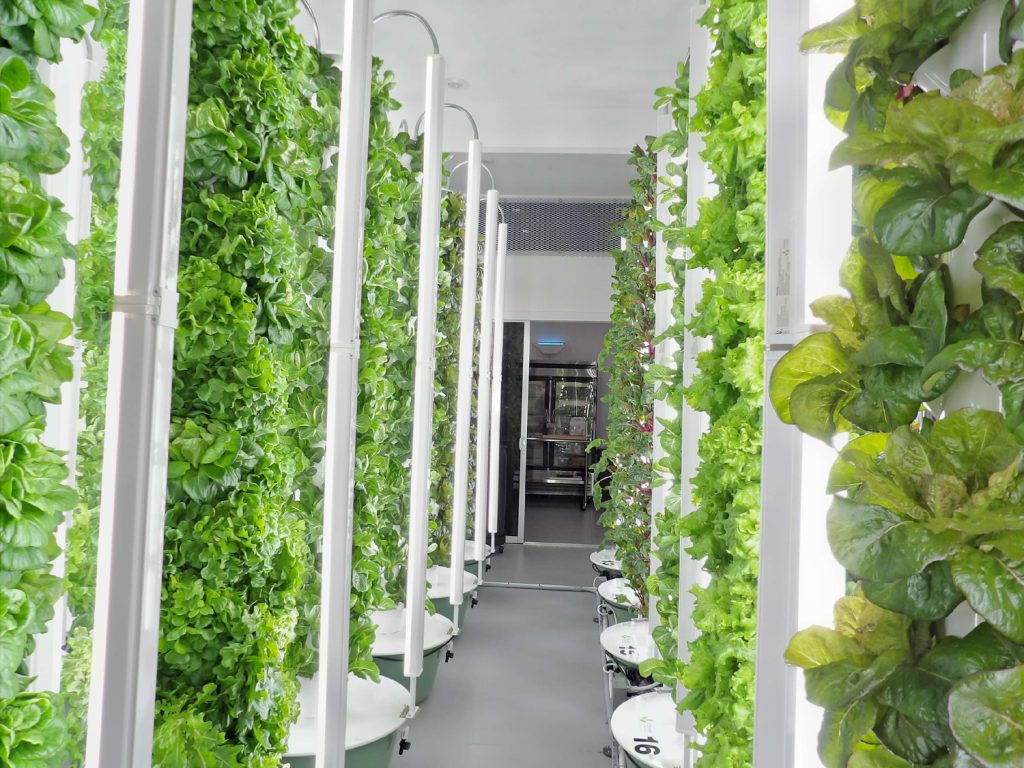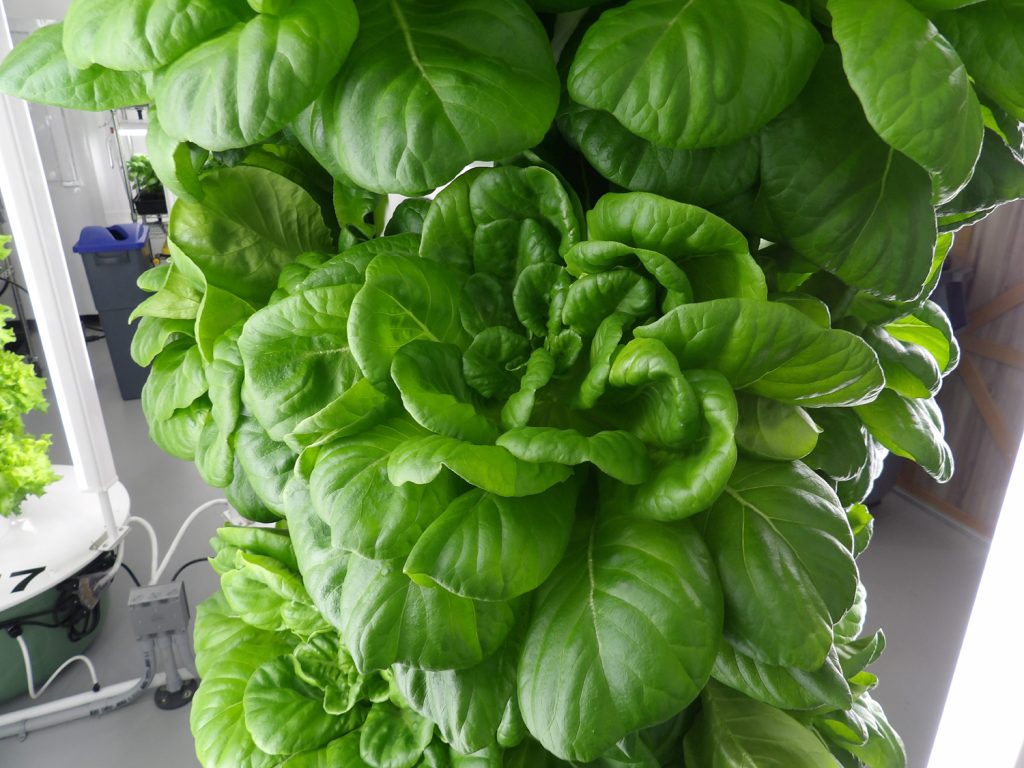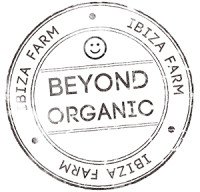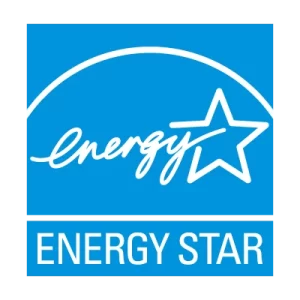Table 1 shows the comparison in the average crop yield per plant, average fruit weight, and average number of fruits per plant in different crops grown in aeroponic growing systems (AG) and in the field (FG). The average crop yield per plant (and total yield) was higher in the crops grown in aeroponic systems as compared to those grown in the field. An average increase of about 19%, 8%, 65%, and 21% in yield was recorded in basil, chard, red kale, and parsley (leafy vegetables) when grown in aeroponic systems. Similarly, an average increase of about 53%, 35%, 7%, and 50% in yield was recorded in bell pepper, cherry tomatoes, cucumber, and squash (fruit crops), respectively, when grown in aeroponic systems as compared to those plants grown in the soil. The average weight of the cucumbers was higher in field grown plants, whereas the average weight of squash and bell peppers was higher in the plants grown in aeroponic systems. A comparable average fruit weight (21.78 g in FG and 20.61 g in AG) was observed for cherry tomatoes grown in the two types of growing systems. On the other hand, the average number of fruit produced per plant was higher in all the fruit crops grown in the Tower Garden aeroponic systems as compared to those grown in soil.
Table 1: A comparison of average yield in different leafy vegetables () and fruit crops () grown in the field and aeroponics systems. FG: field grown plants, AG: aeroponic grown plants.
3.2. Determination of Total Phenolic Content
Figure 1 shows the total phenolic content in the samples of different leafy vegetable and fruit crops grown in Tower Garden aeroponic systems and in the soil. Among the leafy vegetables, the highest phenolic content was found in chard (57.73 mg GAE/g dry wt., in FG and 53.45 GAE/g dry weight in AG) followed by basil, red kale, and parsley. Phenolic content was slightly higher in basil, chard, and parsley when grown in soil as compared to those grown in aeroponic systems, whereas phenolic content was slightly higher in aeroponically grown red kale as compared to those grown in the soil. The differences in phenolic content, however, were not found to be statistically significant for all the leafy vegetables (basil, LSD = 32.50, ; chard, LSD = 41.15, ; parsley, LSD = 18.00, ; red kale, LSD = 22.79, ) while grown in two types of cultivation systems. Similarly, differences in phenolic content in aeroponically and field grown fruit crops bell pepper (LSD = 11.10, ), cherry tomatoes (LSD = 13.51, ), cucumber (LSD = 8.86, ), and squash (LSD = 3.94, ) were also observed to be statistically insignificant. Leafy vegetables, in general, have shown higher phenolic content as compared to fruit crops irrespective of cultivation systems.
Figure 1: A comparison of total phenolic content (mg GAE/g dry wt.) in different crops grown in the field (FG) and in aeroponic growing systems (AG); data represent mean ± SD, ; LSD: least significant difference; level of significance: *.
3.3. Determination of Flavonoids Content
The total flavonoids content in different crops grown in aeroponic systems and in the field are shown in Figure2. Among leafy vegetables, the highest amount of flavonoid content was found in parsley (14.35 mg quercetin acid equivalent (QE)/g dry wt. in FG and 13.00 QE/g dry weight in AG) followed by chard (11.08 mg QE/g dry wt. in FG and 12.41 QE/g dry wt. in AG), basil (12.27 mg QE/g in FG and 9.91 QE/g dry wt. in AG), and red kale (6.57 mg QE/g dry wt. in FG and 10.69 QE/g dry wt. in AG), whereas in fruit crops, the flavonoid content was the highest in bell pepper (4.11 mg QE/g dry wt. in FG and 3.70 QE/g dry wt. in AG) followed by cucumber, tomato, and squash. The differences in flavonoid content in aeroponic and field grown crops, basil (LSD = 8.35, ), chard (LSD = 11.19, ), parsley (LSD = 13.04, ), red kale (LSD = 9.63, ), bell pepper (LSD = 2.56, ), cherry tomatoes (LSD = 0.88, ), cucumber (LSD = 1.60,), and squash (LSD = 0.76, ) were observed to be statistically insignificant. Similar to phenolic content leafy vegetables had higher flavonoid content compared to fruit crops.
Figure 2: A comparison of total flavonoid content (mg QE/g dry wt.) in different crops grown in the field (FG) and aeroponic growing systems (AG); data represent mean ± SD, ; LSD: least significant difference; level of significance: *.
3.4. Determination of Antioxidant Activity
3.4.1. 2,2-Diphenyl-1-picrylhydrazyl (DPPH) Assay
Antioxidant properties of AG and FG crops using 2,2-diphenyl-1-picrylhydrazyl (DDPH) assay are shown in Figure 3. Among leafy vegetables, antioxidant activity in terms of radical scavenging activity, using DPPH assay, ranged between 63.88 and 28.80% in the field grown crops, whereas it ranged between 75.22 and 22.91% in the plants grown in aeroponic systems. The maximum antioxidant activity was observed in basil and the minimum in parsley among the leafy vegetables. In general, values of radical scavenging activity were lower in fruit crops as compared to those of leafy vegetables. Among the fruit crops, the activity ranged between 48.47 and 13.93% in field grown crops, whereas it ranged between 47.70 and 16.01% in the crops grown in aeroponic systems. The maximum activity was found in cherry tomatoes and the minimum activity was observed in squash among fruit crops. Radical scavenging activity of aeroponically grown crops was found comparable to those grown in the field. The minor differences in the radical scavenging activity between aeroponically grown crops and those grown in soil were, however, statistically insignificant (basil, LSD = 25.28; chard, LSD = 22.92; parsley, LSD = 8.69; red kale, LSD = 16.06; bell pepper, LSD = 17.15; cherry tomatoes, LSD = 12.65; cucumber, LSD = 5.51; squash, LSD = 6.63) ().
Figure 3: Antioxidant activity of field grown (FG) and aeroponic grown (AG) plants at 500
μg/mL by DPPH assay; data represent mean ± SD, ; LSD: least significant difference; level of significance: *.
3.4.2. Cellular Antioxidant Assay (CAA)
Antioxidant activities of AG and FG crops using the cellular antioxidant assay (CAA) are shown in Figure 4. Similar to DPPH assay, the maximum antioxidant activity, among the leafy vegetables, was found in basil (69.18 CAA units in FG and 73.52 CAA units in AG) and minimum was in parsley (24.51 CAA units in FG and 23.33 CAA units in AG), whereas among fruit crops, maximum activity was in field grown cherry tomatoes (33.11 CAA units) and minimum in field grown squash (14.38 CAA units). Except for tomatoes and chard, all other crops had comparable antioxidant activity () as determined by CAA assay. The activity of tomatoes (LSD = 10.63, and LSD = 15.46, ) and chard (LSD = 6.37, and LSD = 9.05,) was higher in field grown plants as compared to those grown in aeroponic systems.
Figure 4: Antioxidant activity of field grown (FG) and aeroponic grown (AG) plants at 500
μg/mL by cellular antioxidant assay (CAA); data represent mean ± SD, ; LSD: least significant difference; level of significance: *.
4. Discussion
Plants are potential sources of natural antioxidants. Fruits and vegetables in the diet have been shown in epidemiological studies to be protective against several chronic diseases associated with aging such as cancer, cardiovascular disease, cataracts, and brain and immune dysfunction [28–30]. These natural protective effects have been attributed to various components such as carotenoids, vitamins C and E, and phenolic and thiol (SH) compounds [31]. Many studies have focused on the biological activities of phenolics which are potent antioxidants and free radical scavengers [32–34]. The antioxidant activity of phenolics is mainly due to their redox properties, which allows them to act as reducing agents, hydrogen donors, and singlet oxygen quenchers [33, 35, 36]. The interest in phenolic compounds derived from vegetables and their roles in nutrition are therefore increasing [32, 37]. Phenolic compounds are also known to play an important role in stabilizing lipids against peroxidation and inhibiting various types of oxidizing enzymes [38, 39]. The differences in the flavonoid structures and their substitutions influence the phenoxyl radical stability, thereby affecting the antioxidant properties of the flavonoids [40]. In the present study, phenolics and flavonoid content of aeroponically grown crops were found to be comparable to those grown in the soil. The total product yield was, however, higher in aeroponically grown crops. In a similar study, Miller et al. (1989) [41] have reported a greater dry-matter accumulation in maize (Zea mays L.) on the hydroponic system than in well-fertilized, irrigated sandy-loam soil when planting pattern and density were the same. In another study, a significantly higher phenolic content in basil leaves has been reported by Sgherri et al. (2010) [42] while grown in hydroponics as compared to those grown in soil. The antioxidant capacity of fruits and vegetables can be tested using a wide variety of methods. In the present study, the antioxidant activity of the fresh produce was evaluated in terms of their free radical scavenging capacity by DPPH assay. Their activity against intracellular oxidative stress was determined by CAA assay. These assays have frequently been used by researchers to assess antioxidant capacity of different food products [43–45]. Our results show that the radical scavenging activity of aeroponically grown crops was highly comparable to those grown in the field. Sgherri et al. (2010), using similar methods, have reported an improved antioxidant activity of both aqueous and lipid extracts of basil leaves in hydroponic cultivation as compared to those grown in soil. The relationship between total phenolic content and antioxidant activity using DPPH assay and total flavonoid and antioxidant activity using cellular antioxidant assay in different crops grown in aeroponic systems and in the field is shown in Figures 5 and 6, respectively. Following DPPH assay, regression analysis shows that phenolic compounds contribute to about 75% (, ) and 61% (, ) of radical scavenging properties in the crops grown in field and in Tower Garden, respectively (Figure 5). Similarly, flavonoids contribute to about 30% (, ) and 32% (, ) of antioxidant activity in the crops grown in the field and in Tower Garden, respectively (Figure 6). Evidently, the rest of the proportion of antioxidant activity comes from nonphenolic compounds such as vitamins and carotenoids [46]. Phenolics and flavonoids, in general, constitute a major group of compounds, which act as primary antioxidants [47], and are known to react with hydroxyl radicals [48], superoxide anion radicals [49], and lipid peroxy radicals [50]. They are also known to protect DNA from oxidative damage, inhibit growth of tumor cells and possess anti-inflammatory and antimicrobial properties. Similarly, Yao et al. 2010 [51] reported a significant positive correlation between the antioxidant activity and the contents of total flavonoids and total phenolics in celery. The higher proportion of antioxidant activity of phenolic compounds in the species grown in aeroponic systems and in the soil in our study can be used as an accessible source of natural antioxidants. Our data suggests that in spite of a few variations, antioxidant activities of aeroponically grown crops were highly comparable to those grown in soil. Since concentrations of vitamins and phenolic compounds in the crop produce may be influenced by uneven distribution of nutrients in the soil, the hydroponic/aeroponic systems provide a higher level of reproducibility, which is a prerequisite if the product is being used in the food or nutraceutical industry.
Figure 5: Relationship between total phenolic content and antioxidant activity of field grown (FG) and aeroponic grown (AG) plants by DPPH assay.
Figure 6: Relationship between total flavonoid content and antioxidant activity of field grown (FG) and aeroponic grown (AG) plants by cellular antioxidant assay.
In conclusion, the study reveals that plants grown in aeroponic systems show a higher product yield and comparable antioxidant properties (using DPPH and cell-based assays) to those grown in the soil.
